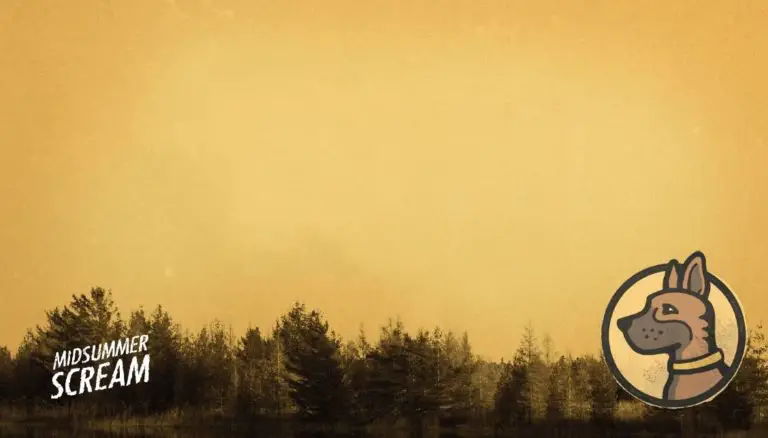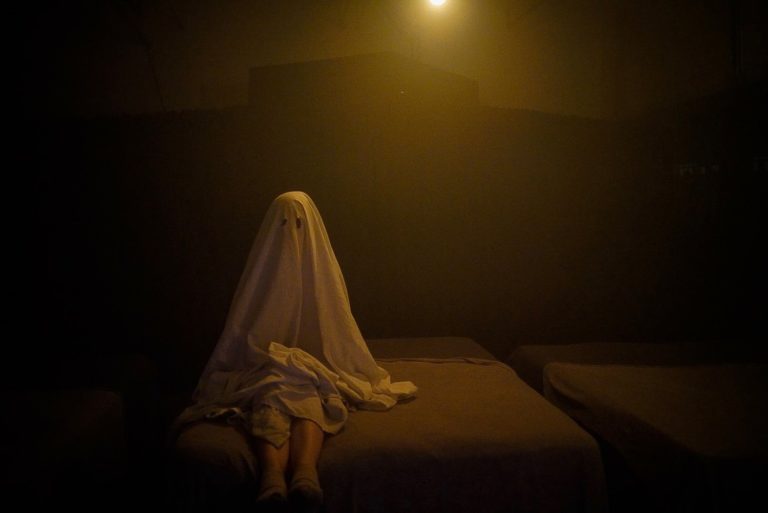While immersive theater has its roots dating back decades, modern immersive theater took root in Los Angeles in the early 2010’s and has exponentially grown since. Listed by LATimes, the arts buzzword of 2016 was “immersive”. Companies began to form, begetting new companies as prior work inspired new artists. For those of us who’ve been in this community, just looking at our calendars clearly shows how much the immersive landscape has changed over the past decade or so. But have you stopped to ever consider just how much this community has grown? How many new companies have formed over the years? How many new experiences we are living? What does the data and analytics say the immersive trends are?
Well today, Immersed’s sister site Haunting is going to tell you a story about the genesis and rise of modern immersive theater and immersive horror. We are also going to gather some data, run some analyses, and make some charts to determine just how this industry is changing and where it’s going!
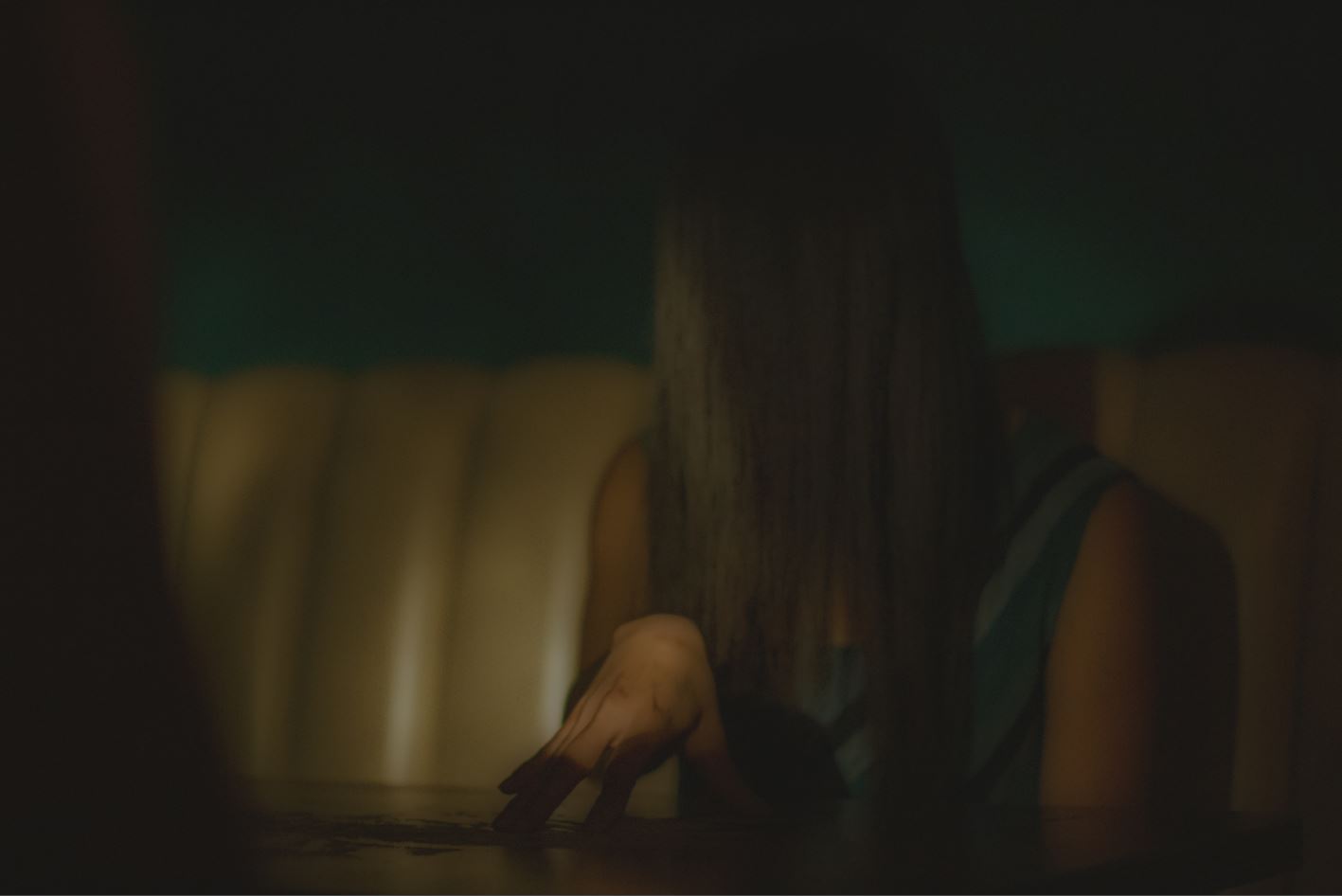
The Start of Modern Immersive Theater & Horror
While immersive theater world-wide is considered a more artistic and interactive art form, the Los Angeles scene spikes during the Halloween Season (google analytics reveal maximum interest in October 2017). With an emphasis on horror, it is no surprise that a strong subset of immersive horror exists here–30% of all immersive theater in LA from 2011 to 2018. But this number is a far cry from its original market dominance.
In 2011, almost all of the modern immersive offerings were horror: Delusion’s debut year of their interactive haunted play, Sinister Pointe moved to Brea to produce an interactive backwoods country experience, and Unbound Productions continued Wicked Lit’s already strong presence. These experiences were site-specific; and Delusion and Sinister Pointe provided strong interactivity for its guests, having them complete tasks, choose pathways, and engage with actors.

But it was Blackout’s move from New York to Los Angeles in 2012 that helped define the modern immersive scene. Blackout directly inspired Alone and Heretic to create their own experiences in 2013, having audiences enter alone and be touched by actors. This anti-haunted house approach (solo-experience, adult-oriented, and touch-based) changed the genre from the group-settings that Delusion and Sinister Pointe had been doing, and helped inspire a new wave of full-contact experiences aimed to scare their audiences.
And it was experiences like Blackout and Alone that went on to inspire Darren Lynn Bousman to create The Tension Experience in 2016, further propelling this genre into the mainstream. Guests went through these initial immersive experiences, became inspired, and formed new companies to tell their own stories. This pattern can be seen in other years: in 2015, Nicholas Sherwin Jr. co-founded Screenshot Productions after being a stage manager in Blackout; in 2017, Aaron Keeling co-founded E3W Productions after being inspired by the evocative nature of immersive theater; and in 2018, the prolific and talented immersive actresses, Keight Leighn and Karlie Blair, co-founded dr3amlogikk after their experiences working with ABC Project, Whisperlodge, and The Experiences, to name a few.
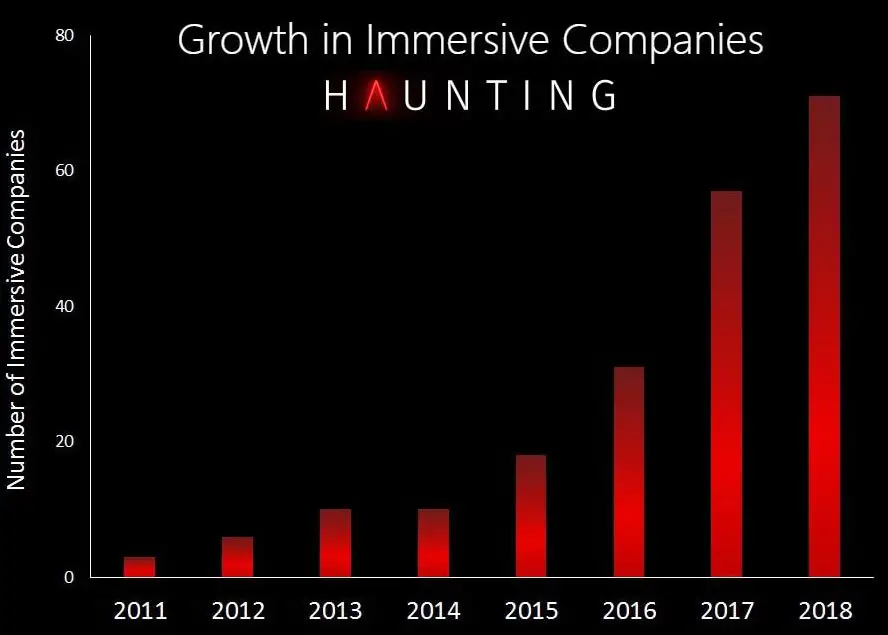
The Rise of Horror in Modern Immersive Theater
With the genre forever changed by Blackout, immersive horror became more popular. In 2014, 90% of modern immersive theater companies could be categorized within the horror genre. This year included some of the hallmark experiences from immersive horror’s past: Alone’s debut year, Blackout’s House and Home Invasion; Blumhouse’s Purge: Fear the Night; Delusion’s Lies Within; Great Horror Campout’s first year; Heretic’s Masochasm, Violent Entities, and the first Midnight Killer; the final year of Knott’s Scary Farm’s Trapped; Sinister Pointe’s Beyond the Mirror: A Bloody Mary Tale; and Unbound Production’s Wicked Lit.
The number of immersive theater companies producing horror experiences continued to rise. In 2014, 9 companies were producing immersive horror–and in 2018, this number has doubled to 20 horror-themed companies. However, with so many varied genres and stories to tell, the dominance of horror in the Los Angeles immersive market was rescinded. Again, this was not because the number of companies declined, but rather, it was because so many non-horror companies entered the market.
But even for those not considered a horror experience, this genre and Halloween found a way to permeate into their work: half (48%) of all immersive companies from 2011 to 2018 produced one or more horror-themed experience. Three quarters of these (72%) occur during Halloween, capitalizing on the love that Los Angeles has for their October Season. For those in Los Angeles, horror still dominates immersive entertainment from September to October.
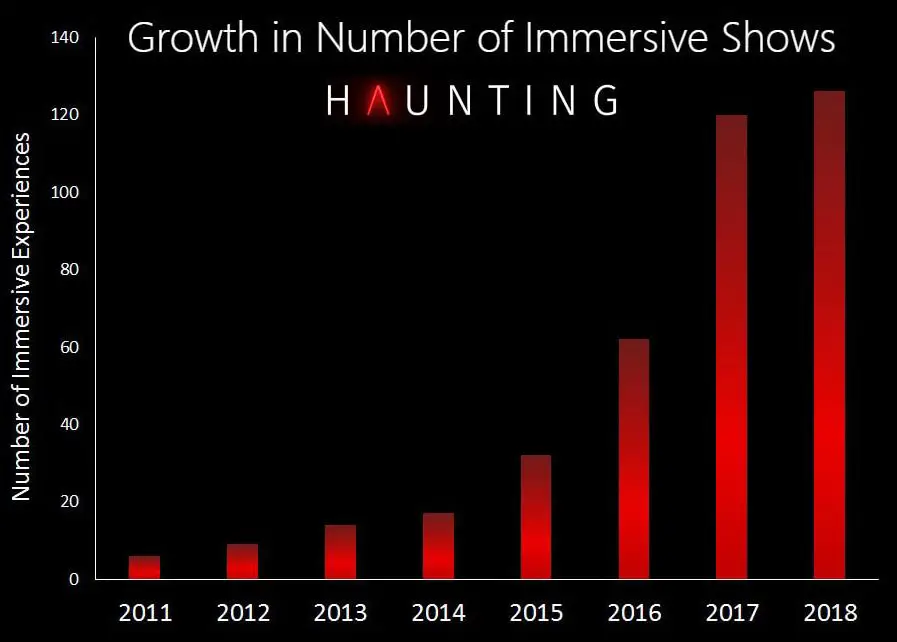
While the above paragraphs detail the genesis and rise of immersive theater in Los Angeles, it is still unclear exactly what caused the exponential growth seen in the last few years, where somewhere like New York has not seen the same growth (Blackout did start there in 2009 after all). Likely, it is multifactorial: a perfect blend of location, timing, and audience. Los Angeles is the entertainment capital of the world, with many actors and entertainment fans eager to engage and participate in immersive theater. Further, having larger movie studios produce immersive activations (e.g., It‘s Neibolt House, Blumhouse’s The Purge, Warner Bros’ Small Foot & Ready Player One, Josh Randall producing The Strangers, and more) and movie influencers (e.g., Neil Patrick Harris’s involvement with Delusion and Darren Lynn Bousman’s The Tension Experience) helps this art form reach broader audiences. Finally, having more experiences will help inspire fans to go out and create their stories on any scale possible.
But regardless of cause, immersive theater is growing at an exponential rate (See Figure 1). But what’s interesting to me, is that the exponential rise in companies matches that of the exponential rise in shows (See the similarity in Figures 1 and 2). Looking at a regression of these data sets (Figure 3; each dot is a company), what we are seeing is that on average, companies are still only producing approximately 2 shows every year from 2011 to 2018 (to be technical, 1.9886 shows per year; Figure 3). Thus, despite a few outliers (Heretic produced 51 experiences and collaborations over its 6 year lifespan (not shown); and that little dot at the top right, that’s The Speakeasy Society producing 25 experiences over it’s 7 year lifespan), the average company is only producing 2 experiences per year.

Immersive Trends & Style Specific Statistics
Looking at subgenres of horror, extreme haunts see a large portion of the publicity in the immersive realm. However, extreme haunts only constitute a very small subset: 9% or 8 of 89 companies in total from 2011 to 2018. This number has experienced consistent growth since Blackout brought their experience to LA in 2012, with Heretic helping inspire in 2013, and a peak of five active extreme haunts seen in 2018.
In total, 37% of all immersive theater has included contact beyond that of general guidance or movement (e.g., hugging, holding, intimate closeness) without qualifying as an extreme haunt, demonstrating that contact can be used to further immerse audiences without scaring them. However, interactivity still appears to be the main method of immersion with 80% of all immersive companies from 2011 to 2018 using interactions with their actors and/or environments to draw their audience in.
A recent trend in immersive theater is the generation of the alternate reality experience (ARX), which constitutes world-creation that extends beyond that of ticketed events. Characters can call you, email you, meet you in-person, or even have social media pages to interact with. While none of these existed in the immersive space, The Tension Experience formalized what this genre would be today in 2016. A surprising number (19 companies or 21%) have used or are using ARX-based mechanics to community- and world-build, creating an experience that lives far beyond the walls of their events.
With the small scale and intimate nature of immersive theater, it has the unique opportunity to be set in the creator’s home. The main motivation of this is usually monetary (a free space), it also can serve to enhance the narrative, reduce headaches caused by numerous builds and strikes in rotating spaces, and also provide an intimate space that feels like a well-dress home. Thus, it’s not surprising that 35% of companies (31 in total) ran one show or more out of their home from 2011 to 2018. This includes In Another Room, in which E3W Productions converted their entire three-bedroom house into a gorgeous set of a haunted house including attic and closets; Whisperlodge, which turned a home into a full-functioning ASMR spa; and Scout Expedition Co., which transformed a small storage shack in their backyard into a retelling of the entire life of a woman named Josie.
Finally, immersive theater is a difficult medium to turn a profit. Thus, we would expect some turn-over. In 2018, 20% (18 in total) of companies that had been previously active (defined by producing one or more shows in prior years) were silent or announced that they would be closing their doors. This is the same as the national averages in which 20% of small businesses fail in their first year. Further, there was no clear similarities between the format, theme, or style of immersive companies that went silent–and they closed their doors for a multitude of reasons: failing to turn a profit, moving onto other projects, life changes, among others.
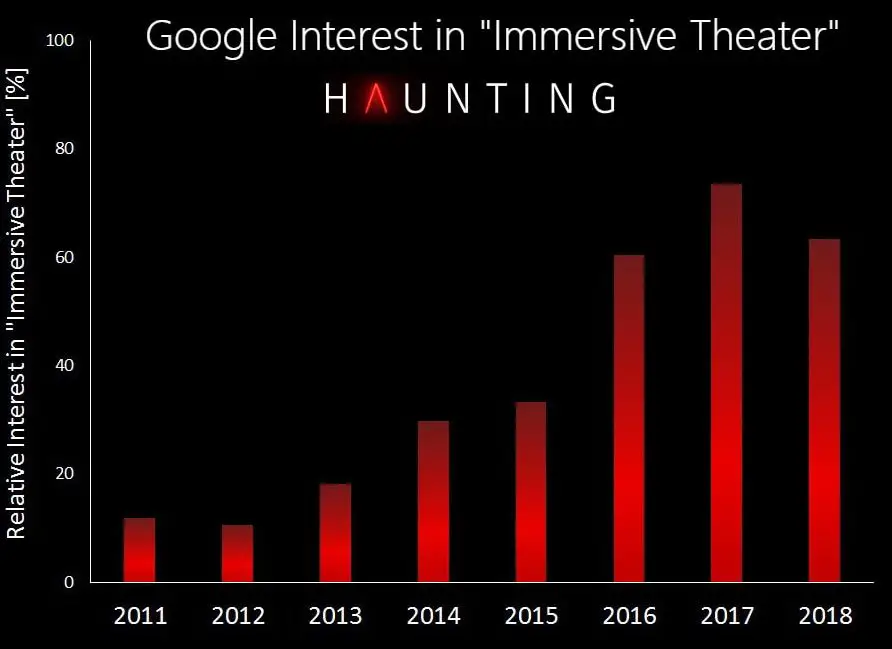
Analytics & Discussion
Horror helped define the immersive landscape in Los Angeles. Setting early precedence and inspiring others, immersive horror helped pave the way for the multitudes of artists that currently fill the immersive theater market. And while their majority seat at the immersive table has been replaced by newer artists, Halloween still drives the Los Angeles immersive market (as seen in the Google Analytics above; Figure 4).
Further, this market is still exponentially rising. While the number of companies were practically doubling yearly, this rise is slowing between 2017 and 2018–suggesting that a saturation of the market is approaching. While we can’t predict when that point will be, we can say that immersive theater is still growing. The inclusion of larger production studios and immersive marketing activations/experiences (e.g., Ready Player One, The Strangers, It’s Neibolt House) will only help expand this genre even further and reach a broader audience.
I also hope this data helps drive confidence to new and emerging markets. We’ve seen grassroots efforts to build an immersive community in regions like Chicago (Miasma, Rough House, Birch House), New York (Shock Theater, This is Real), and even in the UK (Faceless Ventures). If Los Angeles can show these markets anything, it’s that the more companies producing quality work, the more audience members will be inspired to create their own (and secondly, embrace the Halloween season!).
And for Los Angeles–this data shows us that the immersive market has competition. That means quality matters; with more competition, only the best immersive theater will survive. Innovating on themes (like Blackout did by remixing the haunted house genre) and carving out your own niche is always the best way to succeed in a saturated market. Running early shows out of your own home or in immersive-friendly festivals (Hollywood Fringe Festival, Midsummer Scream, Overlook Film Festival) can only help you succeed (For new immersive creators: check out our 13 lessons for immersive creators article).
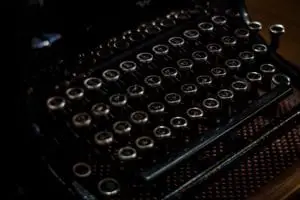
Final Thoughts
There’s a lot of data in here. But there’s a lot of power in this data. As I said above, I hope emerging markets can use this as inspiration to continue their own work and watch their markets rise. I also hope it helps new creators see trends in the industry and find their own niche. Finally, I hope anyone, creator or fan alike, can just sit back and appreciate that there were 126 immersive experiences in Los Angeles in 2018 (and it’s only August!). Seriously, 126 experiences from 71 different companies. That’s pretty damn impressive. We’ve come a long way, and we still have a long way to go. Thanks for reading this journey; maybe I’ll write another one in five years.
Thanks to Alyssa Concha and the numerous members of the community who helped me collect all of this data and looked over it for completeness and correctness. I couldn’t have remembered all of it without you.

